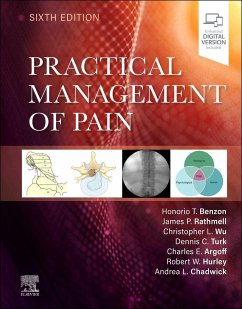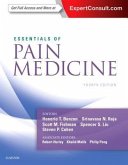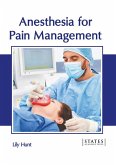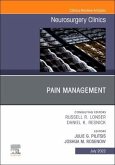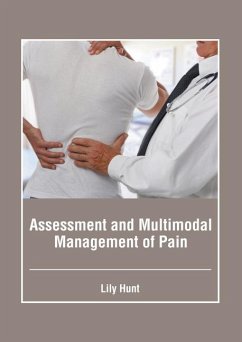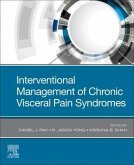Honorio Benzon, James P Rathmell, Christopher L Wu, Dennis Turk, Charles E Argoff, Robert W Hurley
Practical Management of Pain
Herausgeber: Nicol, Andrea L
Honorio Benzon, James P Rathmell, Christopher L Wu, Dennis Turk, Charles E Argoff, Robert W Hurley
Practical Management of Pain
Herausgeber: Nicol, Andrea L
- Gebundenes Buch
- Merkliste
- Auf die Merkliste
- Bewerten Bewerten
- Teilen
- Produkt teilen
- Produkterinnerung
- Produkterinnerung
"Previous editions copyrighted 2014, 2008, 2000, 1992, and 1986"-- copyright page
Andere Kunden interessierten sich auch für
![Essentials of Pain Medicine Essentials of Pain Medicine]() Honorio BenzonEssentials of Pain Medicine122,99 €
Honorio BenzonEssentials of Pain Medicine122,99 €![Anesthesia for Pain Management Anesthesia for Pain Management]() Anesthesia for Pain Management136,99 €
Anesthesia for Pain Management136,99 €![Pain Management, an Issue of Neurosurgery Clinics of North America Pain Management, an Issue of Neurosurgery Clinics of North America]() Pain Management, an Issue of Neurosurgery Clinics of North America139,99 €
Pain Management, an Issue of Neurosurgery Clinics of North America139,99 €![Assessment and Multimodal Management of Pain Assessment and Multimodal Management of Pain]() Assessment and Multimodal Management of Pain148,99 €
Assessment and Multimodal Management of Pain148,99 €![Clinical Pain Management Second Edition: 4 Volume Set Clinical Pain Management Second Edition: 4 Volume Set]() Clinical Pain Management Second Edition: 4 Volume Set839,99 €
Clinical Pain Management Second Edition: 4 Volume Set839,99 €![Pain in Children Pain in Children]() Pain in Children133,99 €
Pain in Children133,99 €![Interventional Management of Chronic Visceral Pain Syndromes Interventional Management of Chronic Visceral Pain Syndromes]() Interventional Management of Chronic Visceral Pain Syndromes67,99 €
Interventional Management of Chronic Visceral Pain Syndromes67,99 €-
-
-
"Previous editions copyrighted 2014, 2008, 2000, 1992, and 1986"-- copyright page
Produktdetails
- Produktdetails
- Verlag: Elsevier Health Sciences
- Artikelnr. des Verlages: C2018-0-02104-0
- 6th edition
- Seitenzahl: 1200
- Erscheinungstermin: 5. Mai 2022
- Englisch
- Abmessung: 279mm x 225mm x 45mm
- Gewicht: 2768g
- ISBN-13: 9780323711012
- ISBN-10: 0323711014
- Artikelnr.: 62812595
- Herstellerkennzeichnung
- Libri GmbH
- Europaallee 1
- 36244 Bad Hersfeld
- gpsr@libri.de
- Verlag: Elsevier Health Sciences
- Artikelnr. des Verlages: C2018-0-02104-0
- 6th edition
- Seitenzahl: 1200
- Erscheinungstermin: 5. Mai 2022
- Englisch
- Abmessung: 279mm x 225mm x 45mm
- Gewicht: 2768g
- ISBN-13: 9780323711012
- ISBN-10: 0323711014
- Artikelnr.: 62812595
- Herstellerkennzeichnung
- Libri GmbH
- Europaallee 1
- 36244 Bad Hersfeld
- gpsr@libri.de
Professor Emeritus of Anesthesiology Associate Chair for Academic Affairs and Promotions Northwestern University Feinberg School of Medicine Chicago, Illinois
1 The History of Pain Medicine
2 Classification of Acute Pain and Chronic Pain Syndromes
3 Organizing an Inpatient Acute Pain Service
4 Interdisciplinary Outpatient Pain Care
5 Healthcare Policy, Access, Resource Availability, Billing
Reimbursement, and Legal Issues in Pain Management
6 Quality Improvement and Patient Safety in Pain Management
7 Education and Training in Pain and Certification in Pain Medicine
8 Neurophysiology of Pain: Peripheral, Spinal, Ascending, and
Descending Pathways
9 A Review of Pain-Processing Pharmacology
10 Neuroimaging Techniques
11 Individual Differences in the Experience and Treatment of Pain:
Race, Ethnicity, Sex, and Gender
12 COMMUNICATION AND CLINICAL RELATIONSHIPS TO IMPROVE CARE FOR
PATIENTS WITH CHRONIC PAIN
13 Genetics in Pain and Pain Management
14 Psychosocial and Psychiatric Aspects of Chronic Pain
15 Comprehensive Approach to the Assessment of Patients Experiencing
Pain and Its Impact
16 Mechanism-Based Treatment and Precision Medicine
17 Placebo and Nocebo Effects in Clinical Trials and Clinical Practice
18 History and Physical Examination of the Patient with Pain
19 Electrodiagnostic Techniques in Pain Medicine
20 Radiologic Assessment of the Patient with Pain
21 Biomarkers of Pain: Quantitative Sensory Testing, Conditioned Pain
Modulation, Punch Skin Biopsy
22 Psychological and Behavioral Assessment
23 Disability Assessment
24 Preemptive Analgesia and Prevention of Chronic Pain Syndromes after
Surgery
24 Postoperative Pain
25 Evaluation and Pharmacologic Treatment of Postoperative Pain
26 Regional and Multimodal Treatments of Perioperative Pain
27 Evaluation and Treatment of Postoperative Pain in Patients with
Opioid Use Disorders
28 Evaluation and Treatment of Acute Pain in Children
29 Low Back Pain Disorders
30 Buttock and Sciatica Pain
31 Facet Pain: Pathogenesis, Facet Joint Injections, Medical Branch
Blocks, Radiofrequency Rhizotomy
32 Neurosurgical Management of Pain
33 Evaluation and Treatment of Cancer-Related Pain
34 Evaluation and Treatment of Neuropathic Pain Syndromes
35 Evaluation and Treatment of Complex Regional Pain Syndrome
36 Evaluation and Treatment of Pain in Selected Neurological Disorders
37 Central Post-Stroke Pain
37 Phantom Pain
37 Spinal Cord Injury Pain
37 Chronic Widespread Pain
38 Headache: Migraine, Trigeminal Neuralgia, Tension-type, and Other
Chronic Headaches
39 Cervicogenic Headache, Postdural Puncture Headache, and Spontaneous
Intracranial Hypotension
40 Orofacial Pain
41 Visceral Pain
42 Pelvic Pain
43 Pediatric Chronic Pain Management
44 Geriatric Pain Management
45 Pain Management During Pregnancy and Lactation
46 Rheumatologic Disorders
47 Pain in Patients with Medical Comorbidities
48 Major Opioids and Chronic Opioid Therapy
49 Minor Analgesics
50 The U.S. Opioid Crisis and the Legal and Legislative Implications
51 Evaluation for Opioid Management: Opioid Misuse Assessment Tools and
Drug Testing in Pain Management
52 Comorbid Pain and Addiction Disorders: Mechanisms and Treatment
53 Antidepressants
54 Adjunct Medications for Pain Management
54 Nonsteroidal Anti-inflammatory Agents/COX-2 Inhibitors
55 Skeletal Muscle Relaxants
56 Cannabinoids for Pain Management
57 Topical Analgesics
57 Neuraxial Agents for Intraspinal Drug Delivery
57 Pharmacology for the Interventional Physician
58 Psychological Approaches in Pain Management
59 Physical Medicine Modalities in Pain Management
60 Physical Rehabilitation for Patients with Chronic Pain
61 Complementary Approaches to Pain Management
62 Patient Education and Self-Management
63 Neurolytic Agents, Neuraxial Neurolysis, and Neurolysis of
Sympathetic Axis for Cancer Pain
64 Head and Neck Blocks
65 Interlaminar and Transforaminal Epidural Steroid Injections
66 Radiofrequency Treatment
67 Hip and Knee Pain: Intraarticular Injections and Radiofrequency
Treatment
67 Sacroiliac Joint Injection, Lateral Branch Blocks, and
Radiofrequency Treatment
68 Neurolysis of Sympathetic Axis for Cancer Pain
68 Muscle Injections: Trigger Point, Piriformis, IIipsoas/Quadratus
Lumborum, and Scalene Muscle Injections
69 Minimally Invasive Procedures for Vertebral Compression Fractures
70 BIOPSYCHOSOCIAL PRE-SCREENING FOR SPINAL CORD AND PERIPHERAL NERVE
STIMULATION DEVICES
71 Spinal Cord, DRG, and Peripheral Nerve Stimulation
72 Intrathecal Pumps
73 Upper Extremity Blocks
73 Lower Extremity Blocks
73 Radiation Safety and Radiographic Contrast Agents
74 Anticoagulation and Infection Considerations in Pain Procedures
74 Truncal Blocks
75 Pain Management in Primary Care
75 Discography
76 Intradiscal Procedures: Intradiscal Electrothermal Therapy (IDET),
Nucleoplasty, Decompressor
76 Pain Management in the Emergency Room
77 Joint injections
77 Management of Pain in Sickle Cell Disease
78 Burn Pain
79 Pain Evaluation and Management in Patients with Limited Ability to
Communicate Due to Dementia
80 Disparities in Pain Management
81 Pain Management in the Critically III Patient
81 The Health Implications of Disparities in Cancer and Pain Care:
Unequal Burdens and Unheard Voices
82 Pain Management at the End of Life and Home Care for the Terminally
Ill Patient
83 Home Care
83 Clinical Trial Methodology for Acute Pain Research
84 Clinical Trial Methodology for Chronic Pain Outcome Studies
85 Ethics of Research in Adult and Pediatric Patients with Pain
86 Directions and Areas in Need of Investigation
87 Test
2 Classification of Acute Pain and Chronic Pain Syndromes
3 Organizing an Inpatient Acute Pain Service
4 Interdisciplinary Outpatient Pain Care
5 Healthcare Policy, Access, Resource Availability, Billing
Reimbursement, and Legal Issues in Pain Management
6 Quality Improvement and Patient Safety in Pain Management
7 Education and Training in Pain and Certification in Pain Medicine
8 Neurophysiology of Pain: Peripheral, Spinal, Ascending, and
Descending Pathways
9 A Review of Pain-Processing Pharmacology
10 Neuroimaging Techniques
11 Individual Differences in the Experience and Treatment of Pain:
Race, Ethnicity, Sex, and Gender
12 COMMUNICATION AND CLINICAL RELATIONSHIPS TO IMPROVE CARE FOR
PATIENTS WITH CHRONIC PAIN
13 Genetics in Pain and Pain Management
14 Psychosocial and Psychiatric Aspects of Chronic Pain
15 Comprehensive Approach to the Assessment of Patients Experiencing
Pain and Its Impact
16 Mechanism-Based Treatment and Precision Medicine
17 Placebo and Nocebo Effects in Clinical Trials and Clinical Practice
18 History and Physical Examination of the Patient with Pain
19 Electrodiagnostic Techniques in Pain Medicine
20 Radiologic Assessment of the Patient with Pain
21 Biomarkers of Pain: Quantitative Sensory Testing, Conditioned Pain
Modulation, Punch Skin Biopsy
22 Psychological and Behavioral Assessment
23 Disability Assessment
24 Preemptive Analgesia and Prevention of Chronic Pain Syndromes after
Surgery
24 Postoperative Pain
25 Evaluation and Pharmacologic Treatment of Postoperative Pain
26 Regional and Multimodal Treatments of Perioperative Pain
27 Evaluation and Treatment of Postoperative Pain in Patients with
Opioid Use Disorders
28 Evaluation and Treatment of Acute Pain in Children
29 Low Back Pain Disorders
30 Buttock and Sciatica Pain
31 Facet Pain: Pathogenesis, Facet Joint Injections, Medical Branch
Blocks, Radiofrequency Rhizotomy
32 Neurosurgical Management of Pain
33 Evaluation and Treatment of Cancer-Related Pain
34 Evaluation and Treatment of Neuropathic Pain Syndromes
35 Evaluation and Treatment of Complex Regional Pain Syndrome
36 Evaluation and Treatment of Pain in Selected Neurological Disorders
37 Central Post-Stroke Pain
37 Phantom Pain
37 Spinal Cord Injury Pain
37 Chronic Widespread Pain
38 Headache: Migraine, Trigeminal Neuralgia, Tension-type, and Other
Chronic Headaches
39 Cervicogenic Headache, Postdural Puncture Headache, and Spontaneous
Intracranial Hypotension
40 Orofacial Pain
41 Visceral Pain
42 Pelvic Pain
43 Pediatric Chronic Pain Management
44 Geriatric Pain Management
45 Pain Management During Pregnancy and Lactation
46 Rheumatologic Disorders
47 Pain in Patients with Medical Comorbidities
48 Major Opioids and Chronic Opioid Therapy
49 Minor Analgesics
50 The U.S. Opioid Crisis and the Legal and Legislative Implications
51 Evaluation for Opioid Management: Opioid Misuse Assessment Tools and
Drug Testing in Pain Management
52 Comorbid Pain and Addiction Disorders: Mechanisms and Treatment
53 Antidepressants
54 Adjunct Medications for Pain Management
54 Nonsteroidal Anti-inflammatory Agents/COX-2 Inhibitors
55 Skeletal Muscle Relaxants
56 Cannabinoids for Pain Management
57 Topical Analgesics
57 Neuraxial Agents for Intraspinal Drug Delivery
57 Pharmacology for the Interventional Physician
58 Psychological Approaches in Pain Management
59 Physical Medicine Modalities in Pain Management
60 Physical Rehabilitation for Patients with Chronic Pain
61 Complementary Approaches to Pain Management
62 Patient Education and Self-Management
63 Neurolytic Agents, Neuraxial Neurolysis, and Neurolysis of
Sympathetic Axis for Cancer Pain
64 Head and Neck Blocks
65 Interlaminar and Transforaminal Epidural Steroid Injections
66 Radiofrequency Treatment
67 Hip and Knee Pain: Intraarticular Injections and Radiofrequency
Treatment
67 Sacroiliac Joint Injection, Lateral Branch Blocks, and
Radiofrequency Treatment
68 Neurolysis of Sympathetic Axis for Cancer Pain
68 Muscle Injections: Trigger Point, Piriformis, IIipsoas/Quadratus
Lumborum, and Scalene Muscle Injections
69 Minimally Invasive Procedures for Vertebral Compression Fractures
70 BIOPSYCHOSOCIAL PRE-SCREENING FOR SPINAL CORD AND PERIPHERAL NERVE
STIMULATION DEVICES
71 Spinal Cord, DRG, and Peripheral Nerve Stimulation
72 Intrathecal Pumps
73 Upper Extremity Blocks
73 Lower Extremity Blocks
73 Radiation Safety and Radiographic Contrast Agents
74 Anticoagulation and Infection Considerations in Pain Procedures
74 Truncal Blocks
75 Pain Management in Primary Care
75 Discography
76 Intradiscal Procedures: Intradiscal Electrothermal Therapy (IDET),
Nucleoplasty, Decompressor
76 Pain Management in the Emergency Room
77 Joint injections
77 Management of Pain in Sickle Cell Disease
78 Burn Pain
79 Pain Evaluation and Management in Patients with Limited Ability to
Communicate Due to Dementia
80 Disparities in Pain Management
81 Pain Management in the Critically III Patient
81 The Health Implications of Disparities in Cancer and Pain Care:
Unequal Burdens and Unheard Voices
82 Pain Management at the End of Life and Home Care for the Terminally
Ill Patient
83 Home Care
83 Clinical Trial Methodology for Acute Pain Research
84 Clinical Trial Methodology for Chronic Pain Outcome Studies
85 Ethics of Research in Adult and Pediatric Patients with Pain
86 Directions and Areas in Need of Investigation
87 Test
1 The History of Pain Medicine
2 Classification of Acute Pain and Chronic Pain Syndromes
3 Organizing an Inpatient Acute Pain Service
4 Interdisciplinary Outpatient Pain Care
5 Healthcare Policy, Access, Resource Availability, Billing
Reimbursement, and Legal Issues in Pain Management
6 Quality Improvement and Patient Safety in Pain Management
7 Education and Training in Pain and Certification in Pain Medicine
8 Neurophysiology of Pain: Peripheral, Spinal, Ascending, and
Descending Pathways
9 A Review of Pain-Processing Pharmacology
10 Neuroimaging Techniques
11 Individual Differences in the Experience and Treatment of Pain:
Race, Ethnicity, Sex, and Gender
12 COMMUNICATION AND CLINICAL RELATIONSHIPS TO IMPROVE CARE FOR
PATIENTS WITH CHRONIC PAIN
13 Genetics in Pain and Pain Management
14 Psychosocial and Psychiatric Aspects of Chronic Pain
15 Comprehensive Approach to the Assessment of Patients Experiencing
Pain and Its Impact
16 Mechanism-Based Treatment and Precision Medicine
17 Placebo and Nocebo Effects in Clinical Trials and Clinical Practice
18 History and Physical Examination of the Patient with Pain
19 Electrodiagnostic Techniques in Pain Medicine
20 Radiologic Assessment of the Patient with Pain
21 Biomarkers of Pain: Quantitative Sensory Testing, Conditioned Pain
Modulation, Punch Skin Biopsy
22 Psychological and Behavioral Assessment
23 Disability Assessment
24 Preemptive Analgesia and Prevention of Chronic Pain Syndromes after
Surgery
24 Postoperative Pain
25 Evaluation and Pharmacologic Treatment of Postoperative Pain
26 Regional and Multimodal Treatments of Perioperative Pain
27 Evaluation and Treatment of Postoperative Pain in Patients with
Opioid Use Disorders
28 Evaluation and Treatment of Acute Pain in Children
29 Low Back Pain Disorders
30 Buttock and Sciatica Pain
31 Facet Pain: Pathogenesis, Facet Joint Injections, Medical Branch
Blocks, Radiofrequency Rhizotomy
32 Neurosurgical Management of Pain
33 Evaluation and Treatment of Cancer-Related Pain
34 Evaluation and Treatment of Neuropathic Pain Syndromes
35 Evaluation and Treatment of Complex Regional Pain Syndrome
36 Evaluation and Treatment of Pain in Selected Neurological Disorders
37 Central Post-Stroke Pain
37 Phantom Pain
37 Spinal Cord Injury Pain
37 Chronic Widespread Pain
38 Headache: Migraine, Trigeminal Neuralgia, Tension-type, and Other
Chronic Headaches
39 Cervicogenic Headache, Postdural Puncture Headache, and Spontaneous
Intracranial Hypotension
40 Orofacial Pain
41 Visceral Pain
42 Pelvic Pain
43 Pediatric Chronic Pain Management
44 Geriatric Pain Management
45 Pain Management During Pregnancy and Lactation
46 Rheumatologic Disorders
47 Pain in Patients with Medical Comorbidities
48 Major Opioids and Chronic Opioid Therapy
49 Minor Analgesics
50 The U.S. Opioid Crisis and the Legal and Legislative Implications
51 Evaluation for Opioid Management: Opioid Misuse Assessment Tools and
Drug Testing in Pain Management
52 Comorbid Pain and Addiction Disorders: Mechanisms and Treatment
53 Antidepressants
54 Adjunct Medications for Pain Management
54 Nonsteroidal Anti-inflammatory Agents/COX-2 Inhibitors
55 Skeletal Muscle Relaxants
56 Cannabinoids for Pain Management
57 Topical Analgesics
57 Neuraxial Agents for Intraspinal Drug Delivery
57 Pharmacology for the Interventional Physician
58 Psychological Approaches in Pain Management
59 Physical Medicine Modalities in Pain Management
60 Physical Rehabilitation for Patients with Chronic Pain
61 Complementary Approaches to Pain Management
62 Patient Education and Self-Management
63 Neurolytic Agents, Neuraxial Neurolysis, and Neurolysis of
Sympathetic Axis for Cancer Pain
64 Head and Neck Blocks
65 Interlaminar and Transforaminal Epidural Steroid Injections
66 Radiofrequency Treatment
67 Hip and Knee Pain: Intraarticular Injections and Radiofrequency
Treatment
67 Sacroiliac Joint Injection, Lateral Branch Blocks, and
Radiofrequency Treatment
68 Neurolysis of Sympathetic Axis for Cancer Pain
68 Muscle Injections: Trigger Point, Piriformis, IIipsoas/Quadratus
Lumborum, and Scalene Muscle Injections
69 Minimally Invasive Procedures for Vertebral Compression Fractures
70 BIOPSYCHOSOCIAL PRE-SCREENING FOR SPINAL CORD AND PERIPHERAL NERVE
STIMULATION DEVICES
71 Spinal Cord, DRG, and Peripheral Nerve Stimulation
72 Intrathecal Pumps
73 Upper Extremity Blocks
73 Lower Extremity Blocks
73 Radiation Safety and Radiographic Contrast Agents
74 Anticoagulation and Infection Considerations in Pain Procedures
74 Truncal Blocks
75 Pain Management in Primary Care
75 Discography
76 Intradiscal Procedures: Intradiscal Electrothermal Therapy (IDET),
Nucleoplasty, Decompressor
76 Pain Management in the Emergency Room
77 Joint injections
77 Management of Pain in Sickle Cell Disease
78 Burn Pain
79 Pain Evaluation and Management in Patients with Limited Ability to
Communicate Due to Dementia
80 Disparities in Pain Management
81 Pain Management in the Critically III Patient
81 The Health Implications of Disparities in Cancer and Pain Care:
Unequal Burdens and Unheard Voices
82 Pain Management at the End of Life and Home Care for the Terminally
Ill Patient
83 Home Care
83 Clinical Trial Methodology for Acute Pain Research
84 Clinical Trial Methodology for Chronic Pain Outcome Studies
85 Ethics of Research in Adult and Pediatric Patients with Pain
86 Directions and Areas in Need of Investigation
87 Test
2 Classification of Acute Pain and Chronic Pain Syndromes
3 Organizing an Inpatient Acute Pain Service
4 Interdisciplinary Outpatient Pain Care
5 Healthcare Policy, Access, Resource Availability, Billing
Reimbursement, and Legal Issues in Pain Management
6 Quality Improvement and Patient Safety in Pain Management
7 Education and Training in Pain and Certification in Pain Medicine
8 Neurophysiology of Pain: Peripheral, Spinal, Ascending, and
Descending Pathways
9 A Review of Pain-Processing Pharmacology
10 Neuroimaging Techniques
11 Individual Differences in the Experience and Treatment of Pain:
Race, Ethnicity, Sex, and Gender
12 COMMUNICATION AND CLINICAL RELATIONSHIPS TO IMPROVE CARE FOR
PATIENTS WITH CHRONIC PAIN
13 Genetics in Pain and Pain Management
14 Psychosocial and Psychiatric Aspects of Chronic Pain
15 Comprehensive Approach to the Assessment of Patients Experiencing
Pain and Its Impact
16 Mechanism-Based Treatment and Precision Medicine
17 Placebo and Nocebo Effects in Clinical Trials and Clinical Practice
18 History and Physical Examination of the Patient with Pain
19 Electrodiagnostic Techniques in Pain Medicine
20 Radiologic Assessment of the Patient with Pain
21 Biomarkers of Pain: Quantitative Sensory Testing, Conditioned Pain
Modulation, Punch Skin Biopsy
22 Psychological and Behavioral Assessment
23 Disability Assessment
24 Preemptive Analgesia and Prevention of Chronic Pain Syndromes after
Surgery
24 Postoperative Pain
25 Evaluation and Pharmacologic Treatment of Postoperative Pain
26 Regional and Multimodal Treatments of Perioperative Pain
27 Evaluation and Treatment of Postoperative Pain in Patients with
Opioid Use Disorders
28 Evaluation and Treatment of Acute Pain in Children
29 Low Back Pain Disorders
30 Buttock and Sciatica Pain
31 Facet Pain: Pathogenesis, Facet Joint Injections, Medical Branch
Blocks, Radiofrequency Rhizotomy
32 Neurosurgical Management of Pain
33 Evaluation and Treatment of Cancer-Related Pain
34 Evaluation and Treatment of Neuropathic Pain Syndromes
35 Evaluation and Treatment of Complex Regional Pain Syndrome
36 Evaluation and Treatment of Pain in Selected Neurological Disorders
37 Central Post-Stroke Pain
37 Phantom Pain
37 Spinal Cord Injury Pain
37 Chronic Widespread Pain
38 Headache: Migraine, Trigeminal Neuralgia, Tension-type, and Other
Chronic Headaches
39 Cervicogenic Headache, Postdural Puncture Headache, and Spontaneous
Intracranial Hypotension
40 Orofacial Pain
41 Visceral Pain
42 Pelvic Pain
43 Pediatric Chronic Pain Management
44 Geriatric Pain Management
45 Pain Management During Pregnancy and Lactation
46 Rheumatologic Disorders
47 Pain in Patients with Medical Comorbidities
48 Major Opioids and Chronic Opioid Therapy
49 Minor Analgesics
50 The U.S. Opioid Crisis and the Legal and Legislative Implications
51 Evaluation for Opioid Management: Opioid Misuse Assessment Tools and
Drug Testing in Pain Management
52 Comorbid Pain and Addiction Disorders: Mechanisms and Treatment
53 Antidepressants
54 Adjunct Medications for Pain Management
54 Nonsteroidal Anti-inflammatory Agents/COX-2 Inhibitors
55 Skeletal Muscle Relaxants
56 Cannabinoids for Pain Management
57 Topical Analgesics
57 Neuraxial Agents for Intraspinal Drug Delivery
57 Pharmacology for the Interventional Physician
58 Psychological Approaches in Pain Management
59 Physical Medicine Modalities in Pain Management
60 Physical Rehabilitation for Patients with Chronic Pain
61 Complementary Approaches to Pain Management
62 Patient Education and Self-Management
63 Neurolytic Agents, Neuraxial Neurolysis, and Neurolysis of
Sympathetic Axis for Cancer Pain
64 Head and Neck Blocks
65 Interlaminar and Transforaminal Epidural Steroid Injections
66 Radiofrequency Treatment
67 Hip and Knee Pain: Intraarticular Injections and Radiofrequency
Treatment
67 Sacroiliac Joint Injection, Lateral Branch Blocks, and
Radiofrequency Treatment
68 Neurolysis of Sympathetic Axis for Cancer Pain
68 Muscle Injections: Trigger Point, Piriformis, IIipsoas/Quadratus
Lumborum, and Scalene Muscle Injections
69 Minimally Invasive Procedures for Vertebral Compression Fractures
70 BIOPSYCHOSOCIAL PRE-SCREENING FOR SPINAL CORD AND PERIPHERAL NERVE
STIMULATION DEVICES
71 Spinal Cord, DRG, and Peripheral Nerve Stimulation
72 Intrathecal Pumps
73 Upper Extremity Blocks
73 Lower Extremity Blocks
73 Radiation Safety and Radiographic Contrast Agents
74 Anticoagulation and Infection Considerations in Pain Procedures
74 Truncal Blocks
75 Pain Management in Primary Care
75 Discography
76 Intradiscal Procedures: Intradiscal Electrothermal Therapy (IDET),
Nucleoplasty, Decompressor
76 Pain Management in the Emergency Room
77 Joint injections
77 Management of Pain in Sickle Cell Disease
78 Burn Pain
79 Pain Evaluation and Management in Patients with Limited Ability to
Communicate Due to Dementia
80 Disparities in Pain Management
81 Pain Management in the Critically III Patient
81 The Health Implications of Disparities in Cancer and Pain Care:
Unequal Burdens and Unheard Voices
82 Pain Management at the End of Life and Home Care for the Terminally
Ill Patient
83 Home Care
83 Clinical Trial Methodology for Acute Pain Research
84 Clinical Trial Methodology for Chronic Pain Outcome Studies
85 Ethics of Research in Adult and Pediatric Patients with Pain
86 Directions and Areas in Need of Investigation
87 Test

